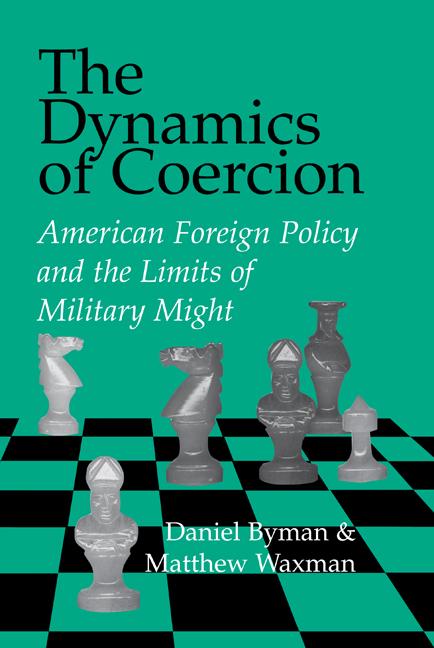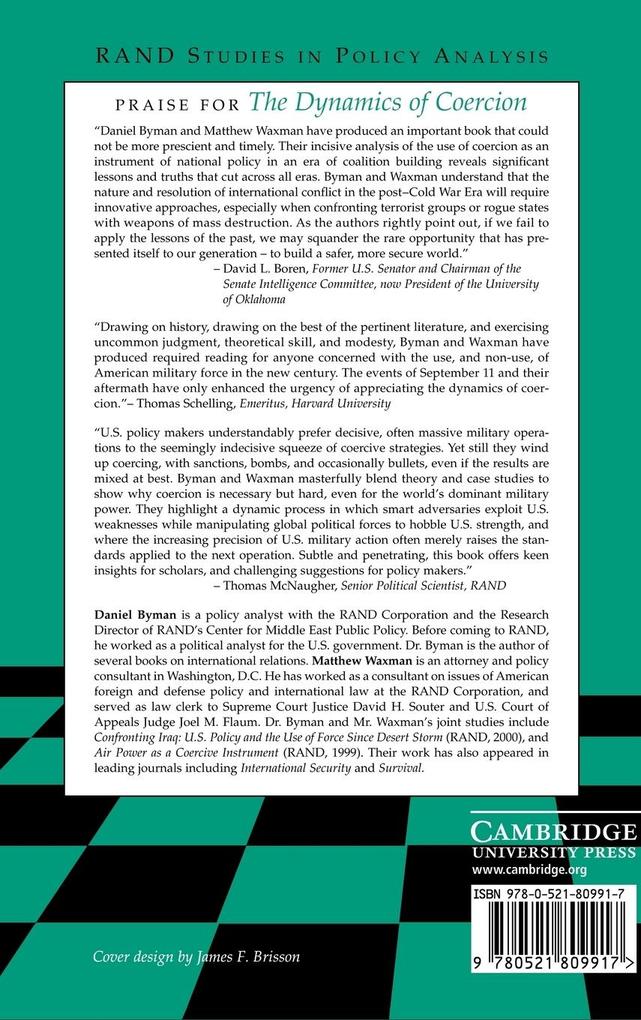
Zustellung: Di, 20.05. - Fr, 23.05.
Versand in 1-2 Wochen
VersandkostenfreiIt examines how the United States does, and should, use limited military force and other means of influencing adversaries. It reviews when limited force can, and cannot, work. It examines a range of current challenges, including those of guerrilla groups, minor powers armed with nuclear, chemical or biological weapons.
Inhaltsverzeichnis
1. Introduction; Part I. Coercive Strategy Making: 2. The theory of coercion; 3. Coercive Mechanisms; 4. Coercive instruments; Part II. The Context of Coercion Today: 5. Domestic politics and coercion; 6. Coercion and coalitions; 7. Humanitarian coercion and non-state actors; 8. Weapons of mass destruction and US coercion; Part III. The Future of US Coercion.
Produktdetails
Erscheinungsdatum
05. Mai 2008
Sprache
englisch
Seitenanzahl
300
Autor/Autorin
Daniel Byman, Matthew C. Waxman
Herausgegeben von
Jr. Wolf
Verlag/Hersteller
Produktart
gebunden
Gewicht
640 g
Größe (L/B/H)
235/157/22 mm
ISBN
9780521809917
Entdecken Sie mehr
Pressestimmen
'Anyone wanting to know why the exercise of US power often doesn't work must read Byman and Waxman's excellent The Dynamics of Coercion; its analysis of US domestic politics and foreign coercion (in coalitions in particular) is clear, coherent and full of good sense.' The Guardian '... this carefully researched and well-argued work will be of great interest to those concerned with the realities and specific challenges of post-Cold War UK foreign policy implementation.' Journal of Peace Research
Bewertungen
0 Bewertungen
Es wurden noch keine Bewertungen abgegeben. Schreiben Sie die erste Bewertung zu "The Dynamics of Coercion" und helfen Sie damit anderen bei der Kaufentscheidung.








